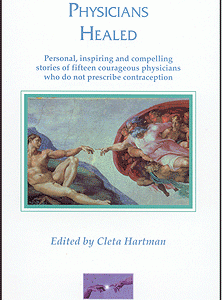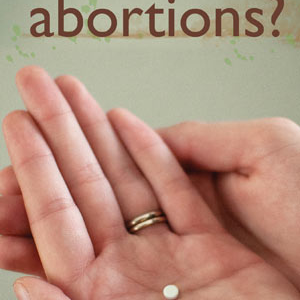Updated Review of Published NFP Studies
New Method of FA/NFP (Potential and Actual)
- Freundl, G., Frank-Herrmann, P., Brown, S., & Blackwell, L. (2014). A new method to detect significant basal body temperature changes during a woman’s menstrual cycle. The European Journal of Contraception & Reproductive Health Care : The Official Journal of the European Society of Contraception, 19(5), 392-400.
- Mulcaire-Jones, G., Fehring, R. J., Bradshaw, M., Brower, K., Lubega, G., & Lubega, P. (2016). Couple beads: An integrated method of natural family planning. The Linacre Quarterly, 83(1), 69-82.
- Soler, F., & Barranco-Castillo, E. (2010). The symptothermal (double check) method: An efficient natural method of family planning. The European Journal of Contraception & Reproductive Health Care : The Official Journal of the European Society of Contraception, 15(5), 379-80; author reply 381-2.
- Ryder, R. E. (1993). “Natural family planning”: Effective birth control supported by the catholic church. BMJ (Clinical Research Ed.), 307(6906), 723-726.
Method Specific Efficacy Studies
- Bouchard, T., Fehring, R. J., & Schneider, M. (2013). Efficacy of a new postpartum transition protocol for avoiding pregnancy. Journal of the American Board of Family Medicine : JABFM, 26(1), 35-44.
- Fehring, R. J., & Mu, Q. (2014). Cohort efficacy study of natural family planning among perimenopause age women. Journal of Obstetric, Gynecologic, and Neonatal Nursing : JOGNN, 43(3), 351-358.
- Fehring, R. J., & Schneider, M. (2017). Effectiveness of a natural family planning service program. MCN.the American Journal of Maternal Child Nursing, 42(1), 43-49.
- Fehring, R. J., Schneider, M., & Barron, M. L. (2008). Efficacy of the marquette method of natural family planning. MCN.the American Journal of Maternal Child Nursing, 33(6), 348-354
- Fehring, R. J., Schneider, M., Barron, M. L., & Pruszynski, J. (2013). Influence of motivation on the efficacy of natural family planning. MCN.the American Journal of Maternal Child Nursing, 38(6), 352-358.
- Warniment, C. B., & Hansen, K. (2012). Is natural family planning a highly effective method of birth control? yes: Natural family planning is highly effective and fulfilling. American Family Physician, 86(10), 1-2.
Accuracy of Fertility (Ovulation) Indicators
- Ecochard, R., Leiva, R., Bouchard, T., Boehringer, H., Direito, A., Mariani, A., et al. (2013). Use of urinary pregnanediol 3-glucuronide to confirm ovulation. Steroids, 78(10), 1035-1040.
- Fehring, R. J., Raviele, K., & Schneider, M. (2004). A comparison of the fertile phase as determined by the clearplan easy fertility monitor and self-assessment of cervical mucus. Contraception, 69(1), 9-14.
Psychological Dynamics, Attitudes, and Characteristics of NFP/FA Users
- Berendt Emil., & Leonard, Judith. (2006). Profiles of responders to a natural family planning awareness campaign. Catholic Social Science Review, 11, 31-46.
- Fehring, R. J. (2015). The influence of contraception, abortion, and natural family planning on divorce rates as found in the 2006-2010 national survey of family growth. The Linacre Quarterly, 82(3), 273-282.
- Smith, A. D., & Smith, J. L. (2014). billingsMentor: Adapting natural family planning to information technology and relieving the user of unnecessary tasks. The Linacre Quarterly, 81(3), 219-238.
Probabilities of Pregnancy
- Frank-Herrmann, P., Jacobs, C., Jenetzky, E., Gnoth, C., Pyper, C., Baur, S., et al. (2017). Natural conception rates in subfertile couples following fertility awareness training. Archives of Gynecology and Obstetrics, 295(4), 1015-1024.
Time to Pregnancy/ Timing Intercourse
- Ecochard, R., Duterque, O., Leiva, R., Bouchard, T., & Vigil, P. (2015). Self-identification of the clinical fertile window and the ovulation period. Fertility and Sterility, 103(5), 1319-25.e3.
Menstrual Cycle Physiology/Medical Tx
- Cai, B., Dunson, D. B., & Stanford, J. B. (2010). Dynamic model for multivariate markers of fecundability. Biometrics, 66(3), 905-913.
- Hilgers, T. W., Keefe, C. E., & Pakiz, K. A. (2015). The use of isomolecular progesterone in the support of pregnancy and fetal safety. Issues in Law & Medicine, 30(2), 159-168.
- Vigil, P., Salgado, A. M., & Cortes, M. E. (2012). Ultrastructural interaction between spermatozoon and human oviductal cells in vitro. Journal of Electron Microscopy, 61(2), 123-126.
Twelve-Year Review (2000-2012) of Published NFP Studies
By Richard J. Fehring, PhD, RN, FAAN—Marquette University
New Method of FA/NFP (Potential and Actual)
- Arevalo, M., Jennings, V., and Sinai, I. Efficacy of a new method of family planning: the Standard Day Method. Contraception. 65 (2002): 333-338.
- Arevalo M, Jennings V, Nikula M, Sinai I. Efficacy of the new TwoDay Method of family planning. Fertility and Sterility. 2004;82:885-892.
- Blackwell, L.F., Brown, J.B., & Vigil, P., et al. Hormonal monitoring of ovarian activity using the Ovarian Monitor, Part I. Validation of home and laboratory results obtained duringovulatory cycles by comparison with radioimmunoassay. Steriods. 2003;68:465-476.
- Burkhart, M.C., de Mazariegos, L., Salazar, S., & Lamprecht, V.M. Effectiveness of a standard-rule method of calendar rhythm among Mayan couples in Guatemala. International Family Planning Perspectives. 26 (August, 2000):131-136.
- Brosens I, Hernalsteen P, Devos A, Cloke B, Brosens JJ. Self-assessment of the cervical pupil sign as a new fertility-awareness method. Fertility and Sterility, 2009 Mar;91(3):937-9.
- Dunlop, A.L., Allen, A.D., & Frank, E. Involving the male partner for interpreting the basal body temperature graph. Obstetrics & Gynecology. 98(2001):133-138.
- Dunlap AL, Schultz R, Frank E. Interpretation of the BBT chart: using the “Gap” technique compared to the Coverline technique. Contraception, 2005;71:188- 192.
- Fehring RJ, Schneider M, Raviele K, Barron ML. Efficacy of cervical mucus observations plus electronic hormonal fertility monitoring as a method of natural family planning. Journal of Obstetric, Gynecological, and Neonatal Nursing, 2007;36:152-160.
- Hadziomerovic D, Moeller KT, Lict P, Hein A, Veitenhansel S, Kusmitsch M, Wildt L. The biphasic pattern of end-expiratory carbon dioxide pressure: a method for identification of the fertile phase of the menstrual cycle. Fertility and Sterility, 2008 Sep;90(3):731-6.
- Wang, J., Usala,S.J. and O’Brien-Usala, F. et al., “The fertile and infertile phases of the menstrual cycle are signaled by cervical-vaginal fluid die swell functions. The Endocrinologist, (2009) 19(6): 291297.
Method Specific Efficacy Studies
- Arevalo, M., Jennings, V., and Sinai, I. Efficacy of a new method of family planning: the Standard Day Method. Contraception. 65 (2002): 333-338.
- Arevalo M, Jennings V, Nikula M, Sinai I. Efficacy of the new TwoDay Method of family planning. Fertility and Sterility. 2004;82:885-892.
- Burkhart, M.C., de Mazariegos, L., Salazar, S., & Lamprecht, V.M. Effectiveness of a standard-rule method of calendar rhythm among Mayan couples in Guatemala. International Family Planning Perspectives. 26 (August, 2000):131-136.
- Fehring RJ, Schneider M, Raviele K, Barron ML. Efficacy of cervical mucus observations plus electronic hormonal fertility monitoring as a method of natural family planning. Journal of Obstetric, Gynecological, and Neonatal Nursing, 2007;36:152-160.
- Fehring, R. J., M. Schneider M, and M.L. Barron. “Efficacy of the Marquette method of natural family planning,” MCN, American Journal of Maternal Child Nursing 33 (2008):348-54.
- Fehring R., Schneider, M., Barron, M.L. and K. Raviele. “Cohort comparison of two fertility awareness methods of family planning,” Journal of Reproductive Medicine. 2009 Mar;54(3):165-70.
- Fehring, R, Schneider, M, & Raviele, K. (2011). Pilot Evaluation of an Internet-based Natural Family Planning Education and Service Program, Journal of Obstetrics, Gynecology,and Neonatal Nursing. 40(3):281-91.
- Frank-Hermann P, Gnoth C, Baure S, Strowitski T, Freundl G. Determination of the fertile window: reproductive competence of women – European cycle databases. Gynecology Endocrinology, 2005; 20: 305- 312.
- Frank-Herrmann P, Heil J, Gnoth C, Toledo E, Baur S, Pyper C, Jenetzky E, Strowitzki T, Freundl G. The effectiveness of a fertility awareness based method to avoid pregnancy in relation to a couple’s sexual behavior during the fertile time: a prospective longitudinal study. Human Reproduction, 2007; 22:1310-1319.
- Jennings, V. & Sinai, I. Further analysis of the theoretical effectiveness of the TwoDay method of family planning. Contraception. 64(2001):149-153.
- I. Sinai, R. I. Lundgren, and J.N. Gribble. “Continued use of the Standard Days Method.” Journal of Family Planning and Reproductive Health Care, (2011): published ahead of print.
Review Articles Efficacy Studies
- Che, Y., Cleland, J.G. and Mohamed, M.A. Periodic abstinence in developing countries: an assessment of failure rates and consequences. Contraception. 2004;69:15-21.
- Grimes DA, Gallo MF, Grigorieva V, Nanda K, Schulz KF. Fertility awareness-based methods for contraception. Cochrane Database Systematic Review, 2004 Oct 18;(4):CD004860. Review. PMID: 15495128
- Grimes DA, Gallo MF, Grigorieva V, Nanda K, Schulz KF. Fertility awareness-based methods for contraception: systematic review of randomized controlled trials. Contraception, 2005;72:85-90.
- Leite IC, Gupta N. Assessing regional differences in contraceptive discontinuation, failure and switching in Brazil. Reproductive Health, 2007;4:6. (BioMed Central)
- Mansour, D, and P. Inki, and K. Gemzell-Danielsson. Efficacy of contraceptive methods: A review of the literature. The European Journal of Contraception and Reproductive Health Care 15 (2010): 4-16.
- Moreau C, Cleland K, Trussell J. Contraceptive discontinuation attributed to method dissatisfaction in the United States. Contraception, 2007, Oct;76(4):267- 72.
- Moreau C, Trussell J, Rodriquez G, Bajos N, Bouyer J. Contraceptive failure in France: results from a population-based survey. Human Reproduction, 2007;22:2422-2427.
- Mosher,WD and J. Jones. Use of contraception in the United States: 1982-2008. Vital and Health Statistics Series 23, Number 29 (2010): 1-77.
- Ranjit, N., Bankole, A., Darroch, J.E. & Singh, S. Contraceptive failure in the first two years of use: differences across socioeconomic subgroups. Family Planning Perspectives. 33 (2001):19-27.
- Trussell J. Contraceptive failure in the United States. Contraception. 2004;70:89-96.
- Wiebe ER, Trussell J. Contraceptive failure related to estimated cycle day of conception related to the start of the last bleeding episode. Contraception 2009; 79: 178-181.
Accuracy of Fertility (Ovulation) Indicators
- Alliende ME, Cabezon C, Figueroa H, Kottmann C. Cervicovaginal fluid changes to detect ovulation accurately. Obstetrics and Gynecology, 2005;193:71-75.
- Attar, E., Gokdemirel, S., Seraroglu, H., & Coskun, A. Natural contraception using the Billings ovulation method. The European Journal of Contraception and Reproductive Health Care. 2002;7:96-99.
- Behre, H.M., Kuhlage, J., & Gassner, C. , et al. Prediction of ovulation by urinary hormone measurements with the home use Clearplan Fertility Monitor: comparison with transvaginal ultrasound scans and serum hormone measurements. Human Reproduction. 12 (2000):2478-2482.
- Blackwell, L.F., Brown, J.B., & Vigil, P., et al. Hormonal monitoring of ovarian activity using the Ovarian Monitor, Part I. Validation of home and laboratory results obtained duringovulatory cycles by comparison with radioimmunoassay. Steriods. 2003;68:465-476.
- Brosens I, Hernalsteen P, Devos A, Cloke B, Brosens JJ. Self-assessment of the cervical pupil sign as a new fertility-awareness method. Fertility and Sterility, 2009 Mar;91(3):937-9.
- Ecochard, R. Boehringer, H., Rabilloud, M., & Marret, H. Chronological aspects of ultrasonic, hormonal, and other indirect indices of ovulation. British Journal of Obstetrics and Gynecology. 108 (2001): 822-829.
- Fehring, R. Accuracy of the peak day of cervical mucus as a biological marker of fertility. Contraception. (2002): 836-47.
- Fehring, R., Raviele, K. and Schneider, M. A comparison of the fertile phase as determined by the Clearplan Easy Fertility Monitor and self-assessment of cervical mucus. Contraception. 2004;69:9-14.
- Freundl, G., Godehardt, E., Kern, P.A., Frank-Hermann, P., Koubenec H.J. and Gnoth, Ch.Estimated maximum failure rates of cycle monitors using daily conception probabilities inthe menstrual cycle. Human Reproduction. 2003:18(2):2628-2633.
- Hadziomerovic D, Moeller KT, Lict P, Hein A, Veitenhansel S, Kusmitsch M, Wildt L. The biphasic pattern of end-expiratory carbon dioxide pressure: a method for identification of the fertile phase of the menstrual cycle. Fertility and Sterility, 2008 Sep;90(3):731-6.
- Scarpa B, Dunson DB, Colombo B. Cervical mucus secretions on the day of intercourse: an accurate marker of highly fertile days. European Journal of Obstetrics and Gynecology and Reproductive Biology, 2006; 125:72-78.
- Wang, J., Usala,S.J. and O’Brien-Usala, F. et al., “The fertile and infertile phases of the menstrual cycle are signaled by cervical-vaginal fluid die swell functions. The Endocrinologist, (2009) 19(6): 291297.
- Blackwell1, P. Vigil, B. Gross, C. d’Arcangues, D.G. Cooke, and J. B. Brown. “Monitoring of ovarian activity by measurement of urinary excretion rates of estrone glucuronide and pregnanediol glucuronide using the Ovarian Monitor, Part II: reliability of home testing.” Human Reproduction. Advance Access published November 29, 2011).
Special Circumstances/Breastfeeding/Post OC
- Arevalo, M., Jennings, V. and Sinai, I. Application of simple fertility awareness-based methods of family planning to breastfeeding women. Fertility and Sterility. 2003;80:1241-1248.
- Gnoth, C., Frank-Hermann, P., & Schmoll, A., et al. Cycle characteristics after discontinuation of oral contraceptives. Gynecological Endocrinology. 2002;16:307-317.
- Fehring RJ, Barron ML, Schneider M. Protocol for determining fertility while breastfeeding and not in cycles. Fertility and Sterility, 2005;84:805-807.
- Tomaselli, G.A., Guida, M., & Palomba, S, et al. Using complete breast-feeding and lactational amenorrhoea as birth spacing methods. Contraception. 61 (April, 2000):253-257.
- Bouchard, T, Schneider, M & Fehring, R. “Efficacy of a New Postpartum Transition Protocol for Avoiding Pregnancy“ Journal of the American Board of Family Medicine. Accepted for publication 8/12.
- I. Sinai and J. Cachan, “A bridge for postpartum women to Standard Days Method, I. Developing the bridge,” Contraception (2012): e-published ahead of print.
- I. Sinai, and J. Cachan, “A bridge for postpartum women to Standard Days Method, II. Efficacy study,” Contraception (2012): e-published ahead of print.
Psychological Dynamics, Attitudes, and Characteristics of NFP/FA Users
- Audu, B.M., Yahya, S.J., & Bassi, A. Knowledge, attitude and practice of natural family planning methods in a population with poor utilization of modern contraceptives. Journal of Obstetrics and Gynecology, 2006;6:555-560.
- den Tonkelaar, I. & Oddens, B.J. Factors influencing women’s satisfaction with birth control methods. The European Journal of Contraception and Reproductive Health Care. 6(2001):153-158.
- Gribble JN, Lundgren RI, Velasquez C, Anastasi EE. Being strategic about contraceptive introduction: the experience of the Standard Days Method Contraception. 2008 Mar;77(3):147-54.
- Janssen, C.J.M., & van Lunsen, R.H.W. Profile and opinions of the female Persona user in The Netherlands. The European Journal of Contraception and Reproductive Health Care. 5 (2000):141-146.
- Leonard CJ, Chavira W, Coonrod DV, Hart KW, Bay RC. Survey of attitudes regarding natural family planning in an urban Hispanic population. Contraception, 2006;74:313-317.
- Mikolajczyk, R.T., Stanford, J.B., & Rauchfuss, M. Factors influencing the choice to use modern natural family planning. Contraception. 2003;67:253-258.
- Moreau C, Cleland K, Trussell J. Contraceptive discontinuation attributed to method dissatisfaction in the United States. Contraception, 2007, Oct;76(4):267-72.
- Mosher WD, Martinez GM, Chandra A, Abma J, Willson SJ. Use of contraception and use of family planning services in the United States: 1982-2002. Advance Data from Vital and Health Statistics. CDC Number 350, December 10, 2004.
- Research Group on Methods for the Natural Regulation of Fertility. Periodic abstinence and calendar method use in Hungary, Peru, the Philippines, and Sri Lanka. Contraception. 64 (2001): 209-215.
- Severy, L.J. Acceptability of home monitoring as an aid to conception. The Journal of International Medical Research. 29(2001,Suppl 1):28A-34A.
- Severy, L.H., Klein, C.T., & McNulty, J. Acceptability of personal hormone monitoring for contraception: longitudinal and contextual variables. The Journal of Social Psychology. 142 (2002): 87-96.
- Severy LJ, Robison J, Findley-Klein C, McNulty J. Acceptability of a home monitor used to aid in conception: psychological factors and couple dynamics. Contraception, 2006;73:65-71.
- Severy LJ, Robison J, Findley-Klein C, McNulty J. Acceptability of a home monitor used to aid in conception: psychological factors and couple dynamics. Contraception, 2006;73:65-71.
- Sinai I, Lundgren R, Arévalo M, Jennings V. Fertility awareness-based methods of family planning: predictors of correct use. International Family Planning Perspectives, 2006;32:94-100.
- Stanford, J.B., & Smith, K.R. Characteristics of women associated with continuing instruction in the Creighton Model Fertility Care System. Contraception. 61 (February, 2000):121-129.
- Tommaselli, G.A., Guida, M., Palomba, S. et al., The importance of user compliance on the effectiveness of natural family planning programs. Gynecological Endocrinology. 14 (2000):81-89.
- VandeVusse, L., Hanson, L., Fehring, R.J. Couples’ views of the effects of natural family planning on marital dynamics. Journal of Nursing Scholarship. 35 (2003):171-176.
Attitudes of Health Professionals to FA/NFP
- Fehring, R.J., Hanson, L., & Stanford, J.B. Nursemidwives’ knowledge and promotion of lactational amenorrhea and other natural family planning methods for child spacing. Journal of Midwifery & Women’s Health. 46 (Mar/April, 2001):68-73.
- Steinauer J, La Rochelle F, Rowh M, Backus L, Sandahl Y, Foster A. First impressions: What are preclinical medical students in the US and Canada learning about sexual and reproductive health. Contraception, 2009 Jul;80(1):74-80.
Probabilities of Pregnancy
- Colombo B, Mion A, Passarin K, Scarpa B. Cervical mucus symptom and daily fecundability: first results from a new database. Statistical Methods in Medical Research, 2006; 15:161-180.
- Dunson, D.B., Sinai, I., & Colombo, B. The relationship between cervical secretions and the daily probabilities of pregnancy: effectiveness of the TwoDay Algorithm. Human Reproduction. 16(2001):2278-2282.
- Keulers MJ, Hamilton CJCM, Franx A, Evers JLH, Bots RSGM. The length of the fertile window is associated with the chance of spontaneously conceiving an ongoing pregnancy in subfertile couples. Human Reproduction, 2007;22:1652-1656.
- Stanford, J.B., Smith, K.R., & Dunson, D.B. Vulvar mucus observations and the probability of pregnancy. Obstetrics & Gynecology. 2003;101:1285-1292.
- Wilcox, A.J., Dunson, D., & Baird, D.D. The timing of the “fertile window” in the menstrual cycle: day specific estimates from a prospective study. British Medical Journal. 321 (November, 2000):1259-1262.
- X. Bilianm Z. Heng, And W. Shang-Chun, et al., “Conception probabilities at different days of menstrual cycle in Chinese women,” Fertility and Sterility (July 5, 2009) Epub ahead of print.
Time to Pregnancy/ Timing Intercourse
- Bigelow JL, Dunson DB, Stanford JB, Ecochard R, Gnoth C, Colombo B. Mucus observations in the fertile window: a better predictor of conception than timing of intercourse. Human Reproduction. 2004;19:889-892.
- Colombo B, Mion A, Passarin K, Scarpa B. Cervical mucus symptom and daily fecundability: first results from a new database. Statistical Methods in Medical Research, 2006; 15:161-180.
- Gnoth, C., Godehardt, D., Godehardt, E., et al. Time to pregnancy: results of the German prospective study and impact on the management of infertility. Human Reproduction. 2003;18:1959-1966.
- Robinson JE, C.Stat MW, Ellis JE. Increased pregnancy rate with use of the Clearblue Easy Fertility Monitor. Fertility and Sterility, 2007;87:329- 234.
- Scarpa B, Dunson DB. Bayesian methods for searching for optimal rules for timing intercourse to achieve pregnancy. Statistics In Medicine, 2007;26:1920-1936.
- Sinai I. Arevalo M. It’s all in the timing: coital frequency and fertility awareness-based methods of family planning. Journal of Biosocial Science, 2006;38:763-777.
- Snick HKA. Should spontaneous or timed intercourse guide couples trying to conceive? Human Reproduction, 2005;10:2976-77.
- Snick, H.K., J.A. Collins, and J. L. H. Evers. What is the most valid comparison treatment in trials of intrauterine insemination, times or uninfluenced intercourse? A systematic review and meta-analysis of indirect evidence. Human Reproduction, 2008; 23(10):239-2245.
- Stanford, J.B., White, G.L., & Hatasaka, H. Timing intercourse to achieve pregnancy: current evidence. Obstetrics & Gynecology. 100 (December, 2002):1333- 1341.
Menstrual Cycle Physiology/Medical Tx
- Fehring, R., Schneider, M., & Raviele, K. (2006). Variability in the phases of the menstrual cycle. Journal of Obstetric, Gynecologic & Neonatal Nursing, 35(3), 376-384.
- Fehring RJ, Schneider M. Variability in the hormonally estimated fertile phase of the menstrual cycle. Fertility and Sterility. 2008 Oct;90(4):1232-5.
- Menarguez M, Pastor LM, Odeblad E. Morphological characterization of different human cervical mucus types using light and scanning electron microscopy. Human Reproduction, 2004;18:1782-1789.
- Mikolajczyk, RT, Buck Louis, GM, Cooney, MA, Lynch, CD, Sundaram, DR. Characteristics of prospectively measured vaginal bleeding among women trying to conceive. Paediatric and Perinatal Epidemiology 24 (2009): 24-30.
- Stanford, JB, Parnell, TA, and Boyle, PC (2008) Outcomes from treatment of infertility with natural procreative technology in an Irish general practice. Journal of the American Board of Family Medicine 21:375-384.
- Vigil, P. Contreres, JL Alvarado, A Godoy, A.<. Salgado, M.E. Cortez. Evidence of subpopulations with different levels of insulin resistance in women with polycystic ovary syndrome. Human Reproduction, 2007 Nov;22(11):2974-80.
- Vigil, P. Cortes, ME, Zuniga, A., Riquelme, J., Ceric, F. Scanning electron and light microscopy study of the cervical mucus in women with polycystic ovary syndrome. Journal of Electron Microscopy. 2009; 58(1):21-27.
- Wiebe ER, Trussell J. Contraceptive failure related to estimated cycle day of conception related to the start of the last bleeding episode. Contraception 2009; 79: 178-181.







